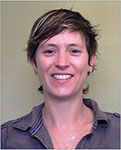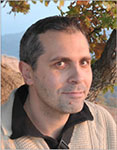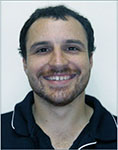Geometric attributes of reservoir elements in a modern, low accomodation, tide-dominated delta
Rachel Nanson A B , Bruce Ainsworth A B , Boyan Vakarelov A B , Andrew Fernie A B and Thomas Massey A BA Australian School of Petroleum
B The University of Adelaide
The APPEA Journal 52(1) 483-492 https://doi.org/10.1071/AJ11038
Published: 2012
Abstract
The influence of wave, tide and fluvial processes on shorelines varies considerably in and between coastal systems; this can result in the development of architecturally complex, mixed-process systems. Of these, tide-dominated systems produce some of the most heterogeneous deposits. The arrangement of reservoir elements generated by wave and fluvial processes in such tide-dominated systems can be, to some degree, systematic and predictable. This research details a modern, tide-dominated, fluvial-influenced, wave-affected coastal system. It presents geometric attributes for reservoir elements that can be used to improve the construction of 3D reservoir models of these depositional environments.
The Mitchell River is the largest fluvial system, discharging into the low accommodation setting of the Gulf of Carpentaria. Its Holocene delta extends to more than 500 km2. Eleven types of depositional elements (n = 3,100) were mapped across the delta plain: 286 km2 of tidal, 133 km2 of fluvial and 101 km2 of wave elements make up the delta surface. Fluvially and wave-formed reservoir elements form systematic arrangements across the system. More than 75% of wave elements are aligned inside 45° of the shoreline and these are generally crescentic (asymmetric) or linear in shape. Fluvial elements are aligned either perpendicular to the shoreline, or alongshore, because they are trapped behind wave-formed, shore parallel features. Separate wave and fluvial reservoir element datasets demonstrate convincing, though distinctly different, length-to-width relationships; wave-formed elements are much longer than fluvial-formed elements, relative to their widths. Despite pronounced heterogeneity in the distribution of these depositional elements across the delta surface, these relationships suggest their distribution is, to some degree, predictable. Analysis of the connectivity of adjacent sandbody elements suggests the largest connected sandbody is significant and extends to more than 90 km2.

Rachel Nanson specialises in coastal and fluvial geomorphology. Rachel formerly held a position as a lecturer in the Department of Geography, Environment and Population at the University of Adelaide and is now a research fellow in the Australian School of Petroleum, University of Adelaide. She gained a BSc degree (honours) in fluvial geomorphology in 1998 from the University of Wollongong, was employed by the NSW state government until 2001, and was awarded her PhD in fluvial geomorphology from UNSW in 2006. rachel.nanson@adelaide.edu.au |

Bruce Ainsworth is the SA state government professor of petroleum geology at the Australian School of Petroleum. Before moving into academia in 2007, he spent 16 years working with Shell companies in Holland, Thailand, Australia, and New Zealand. Bruce has a BSc (Honours) degree from Imperial College, an MSc degree from McMaster University (Canada), and a PhD from the University of Liverpool. bainsworth@asp.adelaide.edu.au |

Boyan Vakarelov is a consultant specialising in shallow-marine sedimentology and sequence stratigraphy. Previously, he held a position as a lecturer at the Australian School of Petroleum, University of Adelaide. He received a BSc (Hons) degree from the University of Toronto in 2001 and a PhD from the University of Texas at Dallas in 2006. bvakarelov@sedbase.com |

Andrew Fernie graduated with a combined bachelors degree in petroleum engineering, and geology and geophysics from the University of Adelaide in 2009. For the past two years he has been working as a development geologist in Papua New Guinea for Horizon Oil. ajfernie@gmail.com |

Thomas Massey received a Bachelor of Engineering degree in petroleum engineering combined with a BSc degree in geology and geophysics from the University of Adelaide in 2009. In 2010, he joined Santos and has since been working in roles as a graduate geologist and reservoir engineer. thom.massey@gmail.com |


